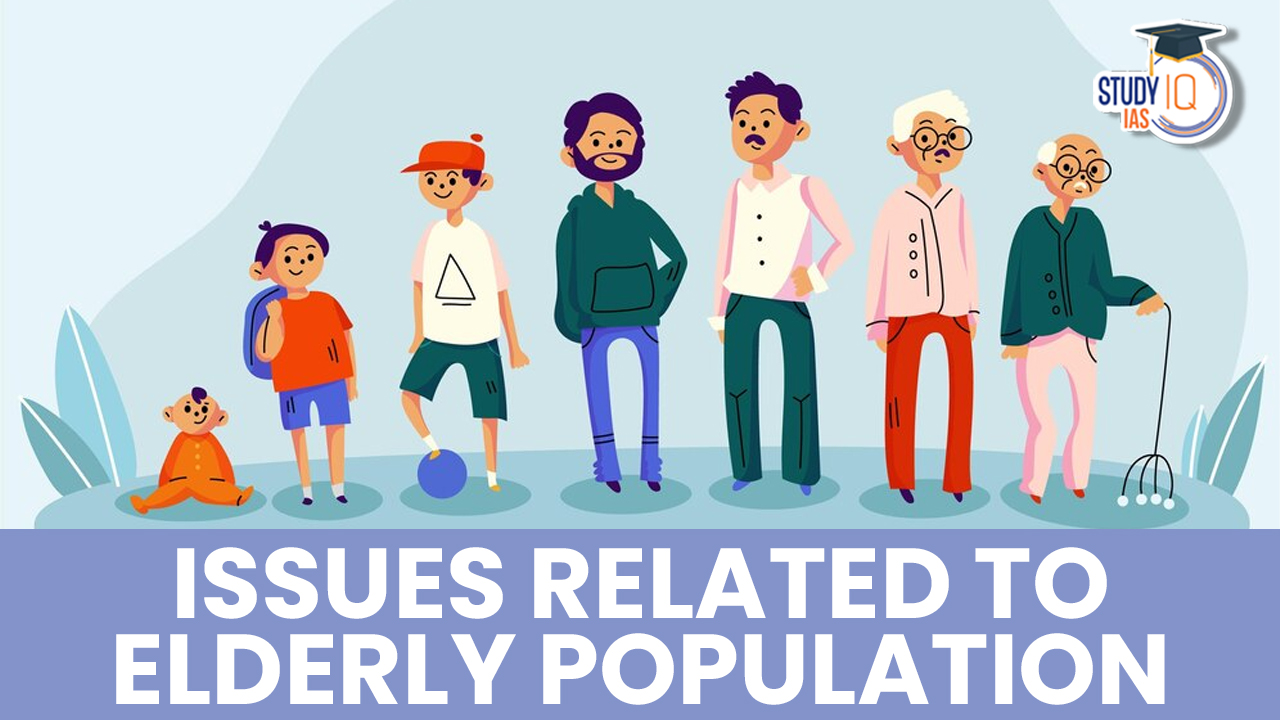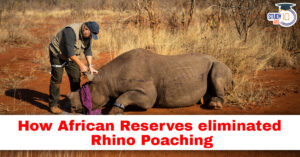Table of Contents
Context: India’s increasingly greying population calls for the need to pay urgent attention to senior citizens and their mental health.
Status of Elderly Population in India:
- According to the Maintenance and Welfare of Parents and Senior Citizens Act, 2007, a senior citizen is any person being a citizen of India, who has attained the age of sixty years or above.
- Of the total World’s Elderly Population, 1/8th live in India.
- According to Population Census 2011, there are nearly 104 million elderly persons in India which has increased from 5.5% in 1951 to 8.6% in 2011.
- With respect to rural and urban areas, more than 73 million persons i.e. 71% of elderly population resides in rural areas while 31 million or 29% of elderly population are in urban areas.
- India accounted for 149 million older adults (10.5%) in 2022 and this number is projected to grow to 347 million (20.8%) by 2050.
Ageing India Report:
“India Ageing Report 2023” was recently released by UNFPA (United Nations Population Fund) India, in collaboration with the International Institute for Population Sciences (IIPS).
Major Findings of the Report
| Ageing in India – Key Trends | Prospects of the older population |
|
| Regional Variations |
|
|
| Ageing index |
|
|
| Old-age dependency ratio |
|
|
| Life expectancy |
|
|
| Challenges of Ageing Population |
|
|
| Vulnerability among Older Population |
|
|
Challenges Faced by the Elderly Population:
Lack of Income & Poor Financial Status:
- Falling interest rates affect the savings and many elderly rely on pensions.
- 43% of the elderly in India earn nothing and 22% earn less than INR 12,000 annually.
Rising Healthcare Costs:
- Increased healthcare needs more finances and there has been increased worries about adequate standards of living in old age.
Insufficient Housing Facilities:
- 47% of the elderly depend economically on families and 34% rely on pensions.
- Their Desire to work, financial constraints, and neglect at home force their dependence on day care centres and old age homes.
Health Challenges:
- 20% of elderly in India face mental health issues; 75% have chronic diseases.
- Degenerative and communicable diseases afflict the elderly; morbidity includes infections, visual impairment, and disabilities.
Social Challenges:
- There is Weakening social bonds in urban areas coupled with financial constraints that limit activities.
- Elder abuse, including physical, sexual, psychological, and financial abuse, is prevalent.
- Rising isolation and loneliness; feelings of being a burden to the family.
Psychological Problems:
- Sense of powerlessness, inferiority, depression, uselessness, and reduced competence.
Digitization Challenges:
- Digital illiteracy hampers access to essential services.
- Digital divide widens the generation gap; trust deficit and fear inhibit technology adoption.
- Reduced personal ties due to communication gaps with younger generations.
Government Initiatives for the Elderly Population:
- Social Security and Welfare Schemes:
- Antodaya Anna Yojana: highly subsidized food grains to poorest families including elderly.
- Pradhan Mantri Vaya Vandana Yojana: insurance scheme for senior citizens that offers guaranteed pension income.
- Varishtha Pension Bima Yojana: pension scheme for elderly citizens, providing regular income and financial security.
- Indira Gandhi National Old Age Pension Scheme (IGNOAPS): social security program that provides financial assistance to elderly individuals in need.
- Jeevan Pramaan: A digital life certificate for pensioners, simplifying the pension verification process.
- Atal Pension Yojana: aimed at providing a stable income to individuals during their retirement years.
- Pradhan Mantri Suraksha Bima Yojana: insurance scheme that offers accidental death and disability coverage to citizens.
- Senior Citizens’ Savings Scheme (SCSS): A savings scheme designed for senior citizens, offering regular interest income.
- Legislations Related to Older Persons:
- Maintenance and Welfare of Senior Citizens Act, 2007: This Act makes it legally obliging for adult children and heirs to provide for parents by way of a monthly allowance.
- National Policy on Older Persons, 1999: The Policy visualizes that the State will extend support for financial security, health care, shelter, welfare and other needs of older persons, provide protection against abuse and exploitation, make available opportunities for development of the potential of older persons, seek their participation, and provide services so that they can improve the quality of their lives.
- National Council of Senior Citizens: Led by the Ministry for Social Justice and Empowerment, the Council, has a five-year term, will review policy execution and advise the government on senior citizen problems.
- Senior Citizens’ Welfare Fund: The Fund was established under the Finance Act,2015. The fund is to be utilized for such schemes for the promotion of the welfare of senior citizens, in line with the National Policy on Older Persons.
- Programmes for the Elderly:
- Atal Vayo Abhyuday Yojana: This Plan takes care of the top four needs of the senior citizens viz financial security, food, health care and human interaction /life of dignity.
- Rashtriya Vayoshri Yojana: A scheme for providing physical Aids and Assisted living devices to Senior Citizens.
- Anubhav platform: To provide a platform for the retiring Central Government employees to showcase commendable work done during service. This would provide satisfaction to the retiring employee and act as a motivator for serving employees.
Way Forward:
- Strengthening the National Policy on Older Persons (NPOP) and enhancing collaboration among various ministries for its effective implementation.
- Encouraging regular feedback and audits of programs for senior citizens to improve their relevance and impact.
- Mobilizing funds, including corporate social responsibility (CSR) funds, to support the development of Community-Based Organizations (CBOs) serving the elderly.
- Promoting intergenerational solidarity to nurture relationships between generations and highlight the contributions of the elderly.
- Strengthening Panchayati Raj Institutions (PRIs) and expanding their capacity to support senior citizens at the community level.
- Encouraging private sector participation in elder care and establishing public-private collaborations to address issues related to ageing.
- Focusing on older persons’ needs in disaster preparedness plans and creating a network of helplines for their support.
- Enhancing data systems and conducting micro-level studies to better understand the elderly population and improve programs and initiatives for their well-being.


 How African Reserves Eliminated Rhino Po...
How African Reserves Eliminated Rhino Po...
 Why India Needs Its Own Economic Model?
Why India Needs Its Own Economic Model?
 Challenges in India’s Airline Sector: ...
Challenges in India’s Airline Sector: ...

























